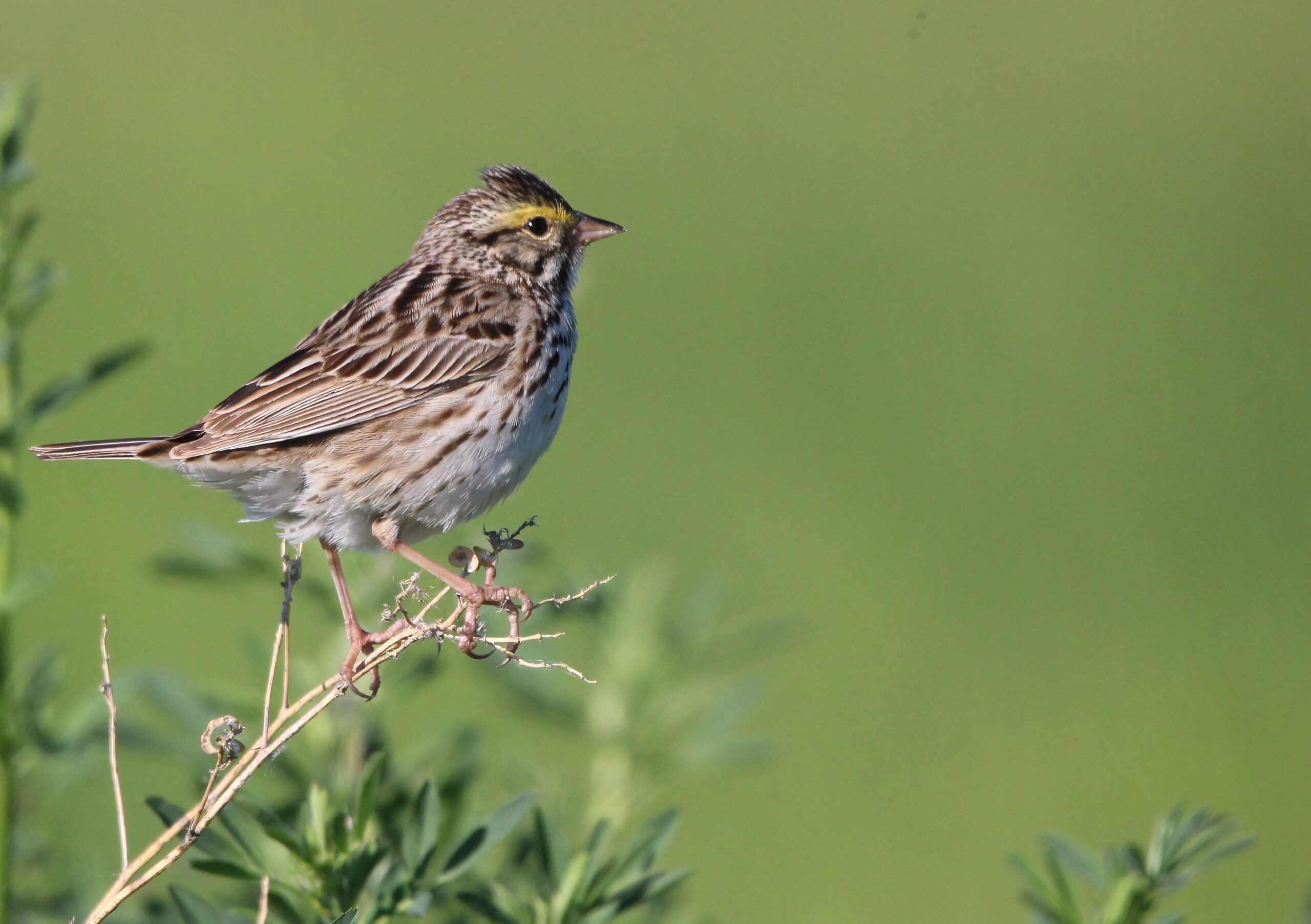In my travels snooping along the shrubs, long grass, old posts and metal fences in the north end of Lake Chestermere, I anticipate the petite gems of an often overlooked group of birds – the sparrows. Urbanization of course, brings us more than enough House Sparrows. However, hidden in the open areas for our pet dogs to roam free, there is usually a pair of unassuming sparrows that are attracted to the thick grass, plants and dead shrubs along the west side of of the irrigation canal. Looking out across the relatively treeless expanse between the houses and the lake, our “grasslands” are in a way our natural Savannah. This seems truly so on those warmer summer days, where the south winds drop the humidity and the band Toto’s hit song, “Africa” comes to mind.
You may ask just what species of sparrow they may be. Heading out at 6:30 in the morning, camera on my shoulder, I look forward to meeting my two friends on an odd looking metal pipe protruding from the earth. With chest feathers illuminated by the morning sun, the pair of Savannah Sparrows, quiet as mice, watch as I approach, walking slowly and deliberately stopping to take the first morning photographs. The sparrows hold their position until finally moving to the tops of brush where they wait for my continued movement. Eventually a “No Trespassing” sign and that famous pipe-perch are places that the Savannah Sparrows move to and land. Savannah Sparrows are ground foragers for the most part. When they do fly, the flight is often short in distance and just above the ground vegetation.
This member of the sparrow family was named in 1811 by Alexander Wilson, the “father of American ornithology, to honour Savannah, Georgia. Averaging 5 inches in length, the distinctive feature this sparrow sports is a yellow patch on its face in front of each eye. This sparrow has brown upper parts with black streaks while its undercarriage is white, and capped with thin brown streaks on the breast. Notable is the small beak designed to eat seeds in the winter months.
Seemingly quiet when compared to House Sparrows, mating calls by the male of the species has a three part arrangement all completed in about three seconds. Short calls start the music, followed by a higher pitch buzz in the middle, ever to be completed with a trill of notes. The more commonly heard call is a brief “chip” that is used to sounds the alarm for fellow Savannah Sparrows – “Hey, there’s a photographer out there!”
If you are out for a walk in the dog park, take a few minutes to listen for a soft chip sound and check the sign and fence posts as well as the tips of shrubs. There may be a Savannah Sparrow watching you enjoying the outdoors.
You’ll Find Me in “Savannah Country”

In response to Canada's Online News Act and Meta (Facebook and Instagram) removing access to Canada's local news from their platforms, Anchor Media Inc encourages you to get your news directly from your trusted source by bookmarking this site and downloading the Rogue Radio App. Send your news tips, story ideas, pictures, and videos to info@anchormedia.ca.






